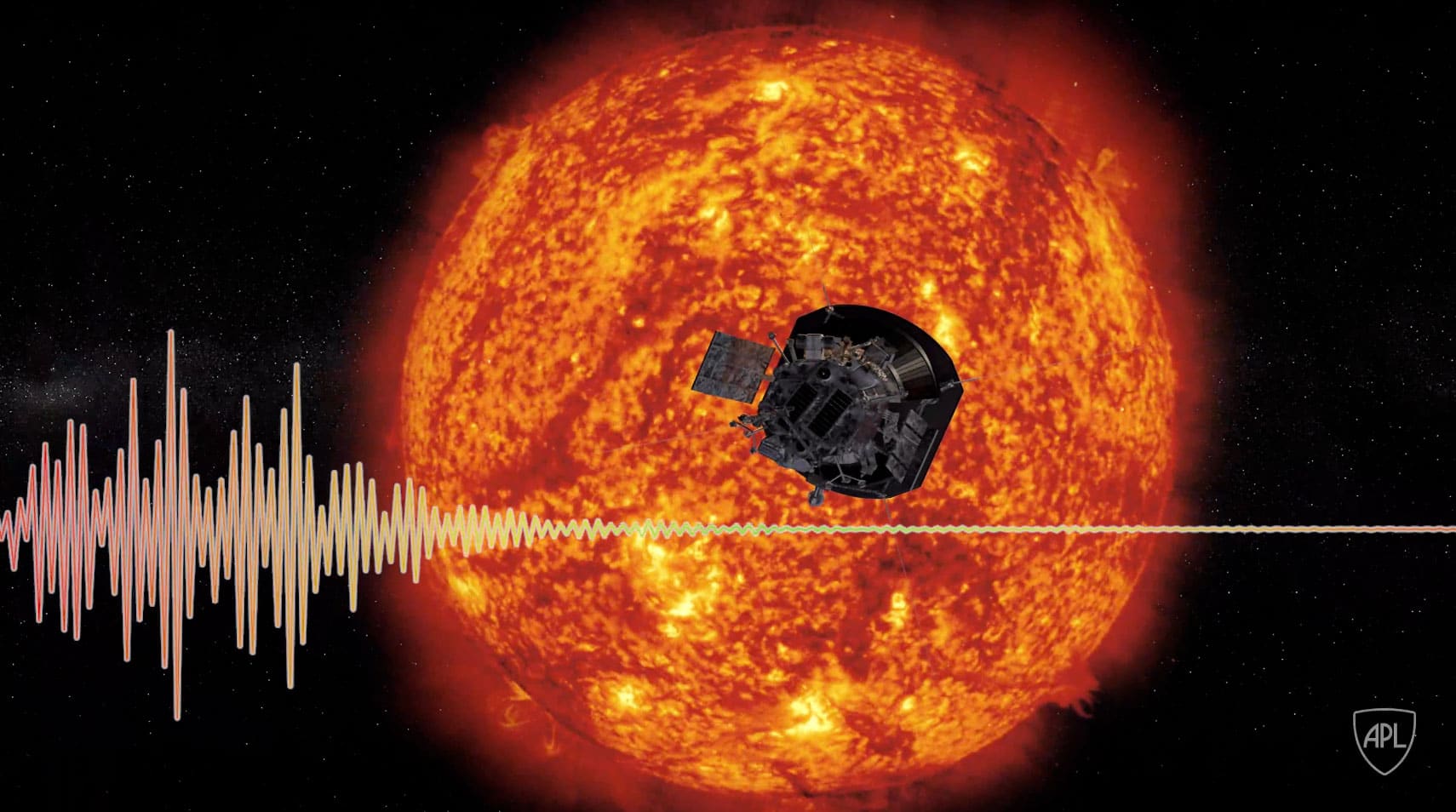The solar wind streams plasma and particles from the sun out into space. Made of electrons, protons, and heavier ions, the solar wind courses through the solar system at roughly 1 million mph (1.6 million kph), barreling over everything in its path.
Scientists have studied the solar wind for over 60 years, yet despite everything, they’re pondered over some of its behaviors. While they realize it originates from the Sun‘s million-degree upper atmosphere called the corona, the solar wind, for instance, doesn’t slow down, it leaves the Sun — it accelerates. It has a kind of internal heater that prevents it from cooling as it speeds through space.
With developing concern about the solar wind’s ability to interfere with GPS satellites and disturb power grids on the ground, it’s become imperative to understand it better.
Just 17 months since launch, and after three orbits around the Sun, Parker Solar Probe hears the sound of the solar wind and reveals that the sound blows like a hurricane’s scream. The sound hint at the origin of this mysterious and ever-present wind. And now the Parker Solar Probe team is getting their first chance to hear them, too.
Project Scientist Nour Raouafi, from the Johns Hopkins Applied Physics Laboratory (APL), in Laurel, Maryland, said, “We expected to make big discoveries because we’re going into uncharted territory. What we’re seeing is beyond anything anybody imagined.”
According to scientists, plasma waves in the solar wind could be responsible for some of the wind’s odd characteristics. They believe that it can certainly play a part in heating and accelerating the particles, but they don’t know how much of a part.
Here Parker Solar Probe can play a significant role. The spacecraft’s FIELDS instrument can eavesdrop on the electric and magnetic fluctuations caused by plasma waves. And it can “hear” when the waves and particles interact with one another, recording frequency and amplitude information about these plasma waves that scientists could then play as sound waves.
David Malaspina, a member of the FIELDS team, an assistant professor at the University of Colorado, Boulder, said, “Nobody knows what causes these chirping waves or what they do to heat and accelerate the solar wind. That’s what we’re going to be determining. I think it’s incredibly exciting.”
The probe not only heard just plasma waves but while barreling through a cloud of microscopic dust, the spacecraft’s instruments also captured a sound resembling old TV static.
That static-like sound is hundreds of little impacts happening every day as dust from asteroids torn apart by the Sun’s gravity and solar heating and particles stripped from comets as they graze the star strikes the spacecraft at speeds close to a quarter of a million miles per hour.
As the spacecraft cruised through this dust cloud, the shuttle not only crashed into these particles — it obliterated them. Each grain’s atoms burst apart into electrons, protons and other ions in a mini puff of plasma that the FIELDS instrument can hear.
James Kinnison, the Parker Solar Probe mission system engineer at APL, said: “This discrepancy in dust density is just one more reason why Parker being close to the Sun is so useful.”
“We protected almost everything from the dust. And although the dust is denser than expected, nothing right now points to dust impacts being a concern for the mission.”
